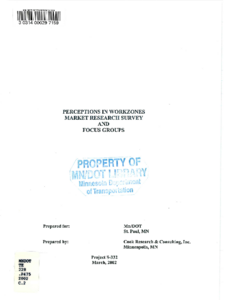Light-Rail Transit Station Design Focus Groups: Final Report
Date Created
1999-09
Description
Congestion Relief Toll Lane Initiative: Market Research
Date Created
1997-12
Description
Public Understanding of State Highway Access Management Issues
Date Created
1998-06
Description








